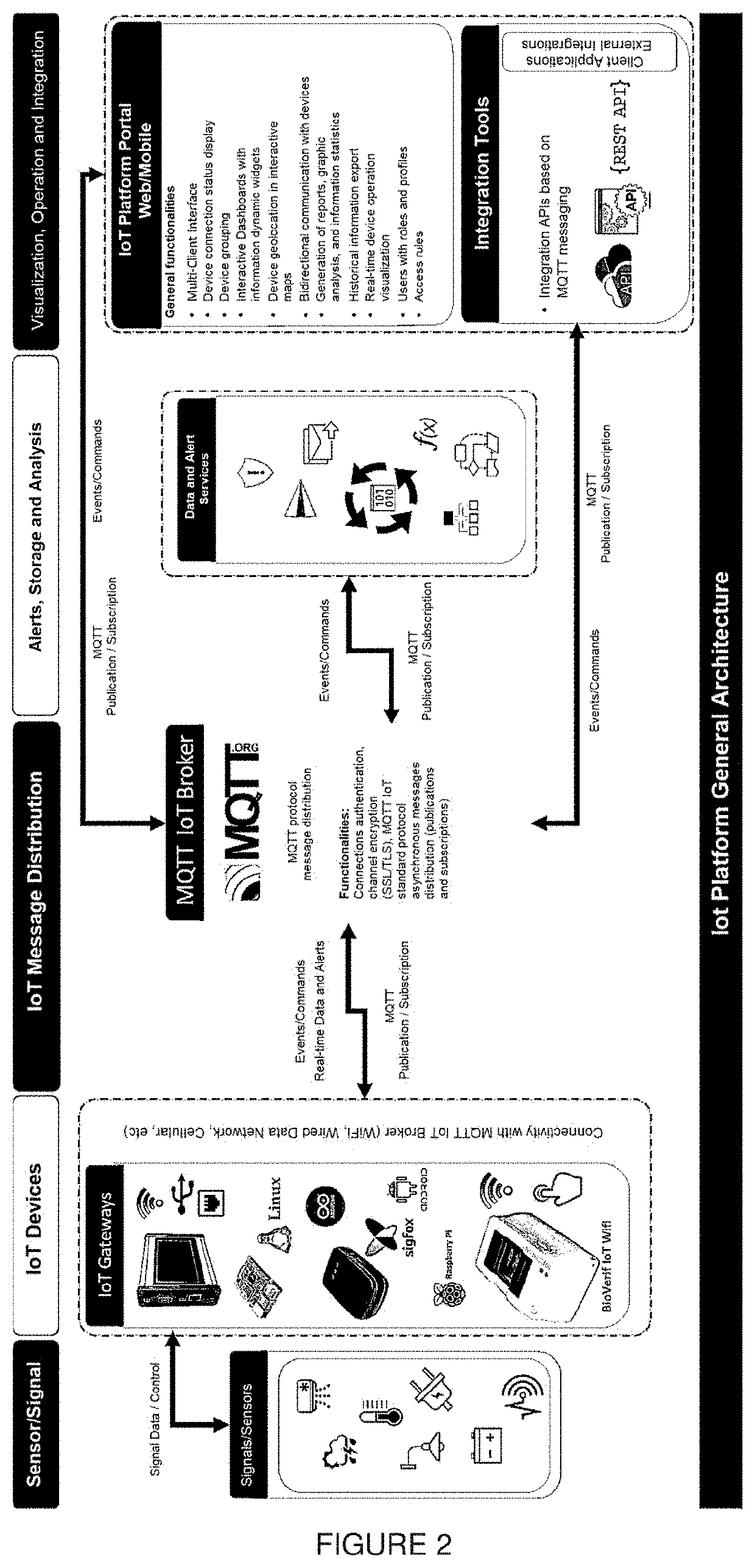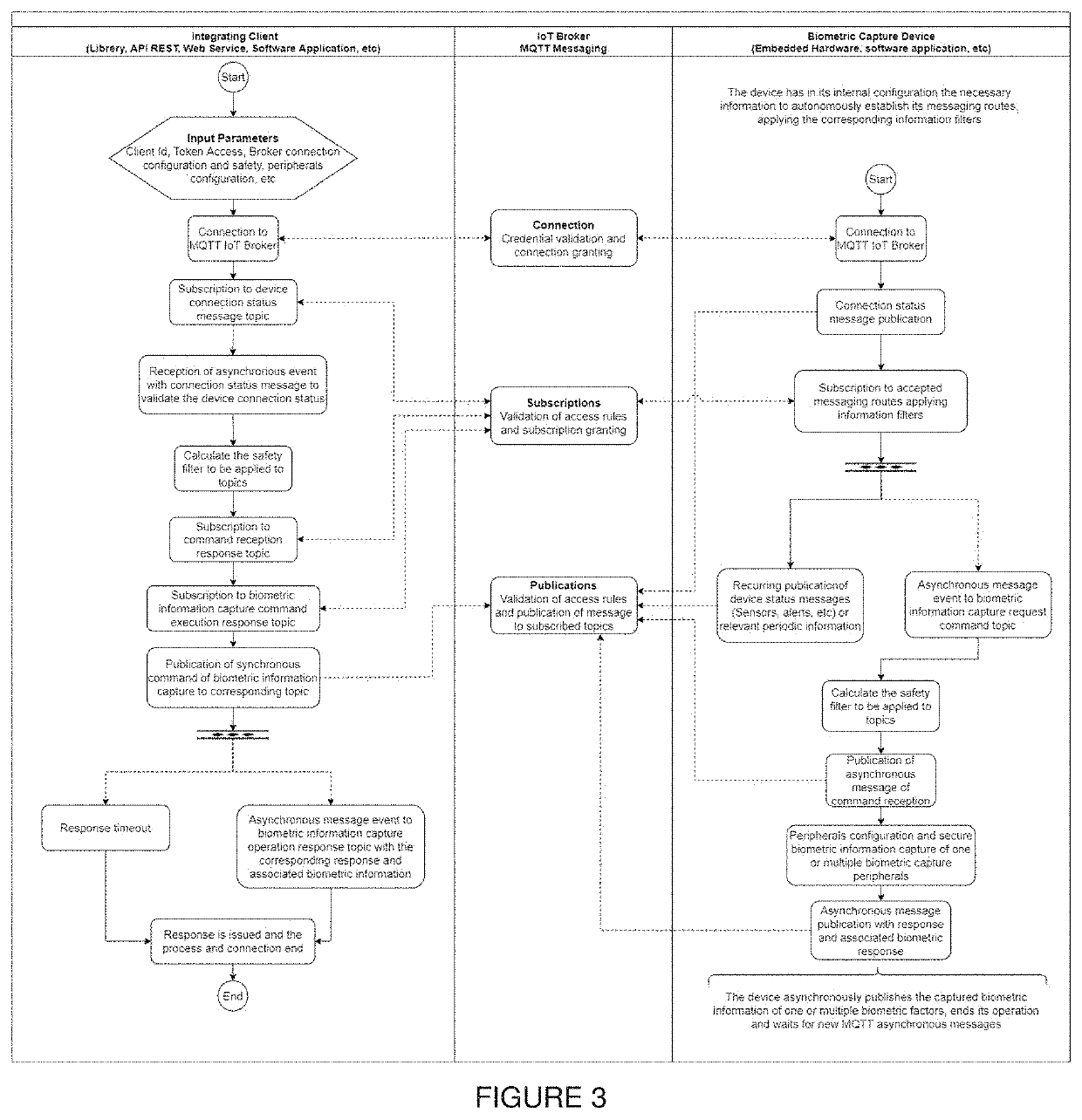Today's existing tools in the field of IoT allow structuring information systems based on architectures that are far from traditional
client /
server schemes, which present great limitations when managing information due to their synchronized management requirements between devices, management of device network access points and external information systems that integrate with them, dependence on proprietary information protocols and complex and difficult to scale connection synchronization models, as well as creating a
server dependency central for any change they wish to make in the interaction with each other or incorporation of new devices with different functionalities, requiring a
reprogramming of the three parts (devices or
client / device and
server) or deployment of multiple versions that allow the correct operation of the
system, generating an
impact on the integral
system.
However, most of these devices incorporate capture sensors that are limited in the quality of the biometric information they generate and have major deficiencies in the management of
information security, which has made biometric technology for robust enrollment or
authentication based on biometric information standards not the most popular in mobile solutions and that the integration of this technology further entails complex developments to implement and dependence on proprietary systems.
However, this patent shows the need for an application installed on a cellular
mobile device, which must be in charge of encrypting the
wireless communication between the device and cellular mobile (securing the channel), preparing the biometric information and sending it to a central service, where this security-level model presents a
vulnerability, given that there is a distributed application installed on a
cell phone and a
mobile operating system, which is vulnerable to
information analysis and computer hacking.
In the same way, a traditional
client / server model is exposed, where a central
system synchronously receives the information through the application installed on the cellular mobile to carry out a biometric matching process and generates the dependence of the device on a system of proprietary information both at the client level and at the central level, where the distribution of information in real time, speed and independence of the devices and applications that integrate them with the central server is limited, generating complex schemes for horizontal scaling and modifications or incorporation of functionalities,
data synchronization and connections.
On the other hand, the device is free to be used by a
mobile device, without specifying protection
modes for the device at the hardware level, connection restrictions with mobile devices and networks or possibilities for limiting
connectivity to the central system, in a similar way, the persistent storage of biometric information on the device or temporarily in the intermediary
software of the
mobile device to which it is connected, generates a security problem since nothing ensures that the information cannot be intercepted, analyzed or even modified to impersonate the identity of a person, or stolen and stored.
This system, however, is based on
software developed with a specific purpose and functionalities, making use of the implementation of a
proprietary protocol which is understood only by the central on which the entire network and its devices depend, evidencing a traditional client / server scheme where the central system is in charge of managing the devices themselves, their connection, communication and specific protocol that implements their functionalities,
synchronizing the required functionality with the other party (client), which limits the distribution of information in real time, speed and independence of the devices and applications that integrate them, and generates complex schemes for horizontal scaling, modifications or incorporation of functionalities to the system, and data and connection synchronization, causing a total dependence of the devices with a specific and proprietary central system, where any change in the communication protocol or functionality between any of the parties would require
reprogramming not only of the devices and clients, but also
reprogramming and / or deployment of multiple versions of the core
software, affecting the entire network to enable new implemented changes.
The proposed system, states that the activation of the devices for biometric capture of the template is carried out from the central through the serial number of the device, which shows a security
vulnerability since the serial can be supplanted since it is a visible identifier and of easy
physical access on the device.
Additionally, the system exposes a procedure where the device operates by sending only biometric
fingerprint templates, which limits the applicability of the solution for processes where there are biometric systems that work based on standard
fingerprint image formats.
 Login to View More
Login to View More  Login to View More
Login to View More 


